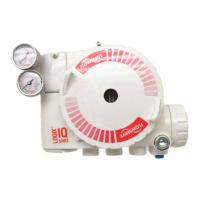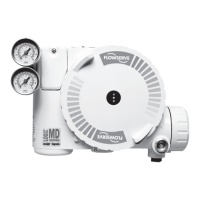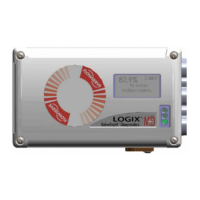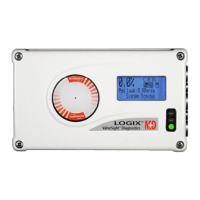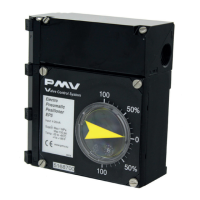User instructions - Digital Positioner 3200MD LGENIM0059-01 10/08
28
6. Remove the two screws holding the pressure sensor board to
the housing. Lift the metal stiffener plate off the pressure sensor
board and set aside for future use.
7. Remove the pressure sensor board.
Installing the Pressure Sensor Board
The pressure sensor board is installed on the advanced model only.
To install the pressure sensor board, refer to Figures 11, 15 and 25
and proceed as outlined below. The following tools are required:
• Phillipsscrewdriver
• Torquewrench
c
WARNING: Observe precautions for handling electrostatic
sensitive devices.
1. Verify that the two pressure sensor O-rings (item 15) are in
place in the housing.
2. Set the pressure sensor board assembly in place so that the
O-rings make contact with the faces of the pressure sensors.
3. Place the metal stiffener plate (item 12) on top of the pressure
sensor board over the pressure sensors and align the two holes
in the pressure sensor plate with the threaded bosses in the
housing.
4. Insert two screws through the stiffener plate and pressure
sensor board into the threaded holes in the housing and tighten
evenly, to 8 in-lb.
5. Connect the ribbon cable on the pressure sensor board to the
main PCB assembly.
6. Install the plastic board cover. Insert the three retaining screws
through the plastic cover into the threaded boss and tighten
evenly, using a Phillips screwdriver. Do not overtighten.
7. Reinstall all covers.
8. Reconnect power and air supply to the positioner. Use ValveS-
ight or a handheld communicator to perform a pressure sensor
calibration.
8.9 Customer Interface Board
The customer interface board provides a connection point inside
the explosion-proof housing for all hookups to the positioner.
Calibration of the loop current and the analog output current
(optional) are performed using a HART 375 Handheld Communi-
cator or configuration software such as ValveSight.
Replacing the Customer Interface Board
To replace the customer interface board, refer to Figures 6, 11,
15 and 25 and proceed as outlined below. The following tools are
required:
• Phillipsscrewdriver
c
WARNING: Observe precautions for handling electrostatic
sensitive devices.
1. Make sure the valve is bypassed or in a safe condition.
2. Disconnect the power and air supply to the unit.
3. Remove the main cover.
4. Remove the plastic board cover by removing the three retaining
screws (see Figure 15).
5. Remove the five wire connections from the main PCB assembly
(six wire connections if the unit is equipped with the 4-20 mA
analog output option) (see Figure 11).
6. Remove the retaining screw from the main PCB assembly and
lift the main PCB out of the housing (see Figure 15).
7. Remove the user interface cover.
8. Disconnect the field wiring from the customer interface board
terminals and remove the three screws that hold the customer
interface board in the housing (see Figure 6).
9. Remove the customer interface board, carefully pulling the wir-
ing through the bore.
10. Verify that the O-ring is in place in the counterbore in the posi-
tioner housing.
11. Feed the wires on the back of the new customer user interface
board through the passageway into the main chamber of the
housing.
12. Set the customer interface board in place and secure with three
screws (see Figure 6).
13. Reconnect the field wiring to the customer interface board
terminals.
14. Install the main PCB into the housing. Insert the retaining screw
through the board into the threaded boss and tighten evenly,
using a Phillips screwdriver. Do not overtighten.
15. Reinstall the five wire connections (six wire connections if the
unit is equipped with the 4-20 mA analog output option) on the
main PCB assembly (see Figure 11).
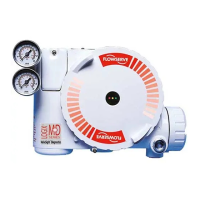
